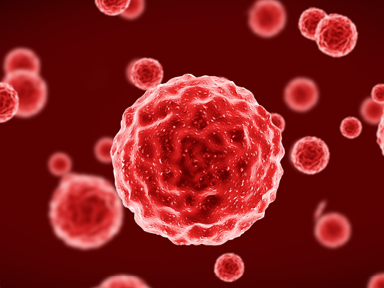drugsJune 21, 2021
Tag: Sickle Cell , Adakveo , coronavirus pandemic
It's been more than six months since Brandy Compton last landed in a hospital emergency room.
That's an amazing medical achievement, brought about by scientific breakthroughs that have been unfortunately overshadowed by the coronavirus pandemic, experts say.
Compton, 31, was born with sickle cell disease, a genetic condition that primarily affects people of African descent.

The disease causes episodes of pain so bad that in the past, Compton had to be hospitalized frequently for full blood transfusions.
"In grade school, I was in the hospital for a week, I'd get out of the hospital for maybe a good week and a half, two weeks, and then I'd be back in the hospital for another week," recalls Compton, who lives in Hartford, Conn. "It was constant."
But last year Compton started on a once-monthly IV drug called Adakveo (crizanlizumab), one of a handful of new sickle cell drugs approved by the U.S. Food and Drug Administration just before the pandemic hit.
The drug has cut in half the amount of blood Compton requires during a transfusion, and has prevented the sort of pain crisis that would send her to an ER, she said.
As the pandemic subsides, sickle cell disease experts are now trying to spread the word about these handful of treatments that could improve and potentially extend the lives of patients.
"In the last three years or so, three new medicines got approved by the FDA with different ways of working that could actually be used together and give more preventive, disease-modifying types of approaches rather than just waiting for the bad complications to occur," said Dr. Lewis Hsu, chief medical officer of the Sickle Cell Disease Association of America.
Progress also is being made on cures that would fix the genetic error that causes sickle cell, either through a donor bone marrow transplant or gene therapy that would fix the patient's own stem cells, Hsu added.
Sickle cell disease affects the shape of a person's red blood cells, which are normally disc-shaped and flexible enough to move easily through blood vessels.
The red blood cells of a person with sickle cell are crescent-shaped, resembling a sickle. The cells are stiff and sticky, and cause pain episodes and other health problems when they clump together in different parts of the body. They also are less capable of carrying oxygen to a person's tissues, causing chronic fatigue.
"Sickle cell feels like jagged rocks shredding the inside of your veins, and your bones being crushed," Compton says.
Sickle cell disproportionately affects Black people in the United States. About 1 in 13 Black babies is born with the genetic trait for sickle cell, and about 1 in every 365 Black babies is born with sickle cell disease, according to the U.S. National Institutes of Health.
For a long time, there was no treatment at all for sickle cell, Hsu said, outside of regular blood transfusions.
"At the age of 13, I started getting blood transfusions," Compton recalls. "After that, it started getting under control. I would be able to go about a month without having to be hospitalized. That time got longer as I got older."
In 1998, the FDA approved hydroxyurea, an oral medicine that can reduce or prevent sickle cell complications in people with specific subtypes of the disease. But following that, there was a "long gap" in new treatments, Hsu said.
That ended in 2017 with the approval of L-glutamine powder, sold under the brand name Endari. Patients sprinkle a packet of this purified amino acid powder on their food or drink twice a day, Hsu said.
"Particularly, it help the red cells be healthier and have better energy stores," Hsu said.
But the two real breakthroughs occurred in November 2019, on the cusp of the pandemic, with FDA approval of two new drugs -- Adaveko and Oxbryta (voxelotor).
Adaveko essentially creates an "oil slick" in the bloodstream that keeps sickled red blood cells from clumping, explained Genice Nelson, program director of the New England Sickle Cell Institute at the University of Connecticut. She also leads Compton's care.
"It helps to improve blood flow by having the cells move along better, gliding instead of sticking to each other," Hsu said.


Contact Us
Tel: (+86) 400 610 1188
WhatsApp/Telegram/Wechat: +86 13621645194
+86 15021993094
Follow Us:




 Pharma Sources Insight July 2025
Pharma Sources Insight July 2025


